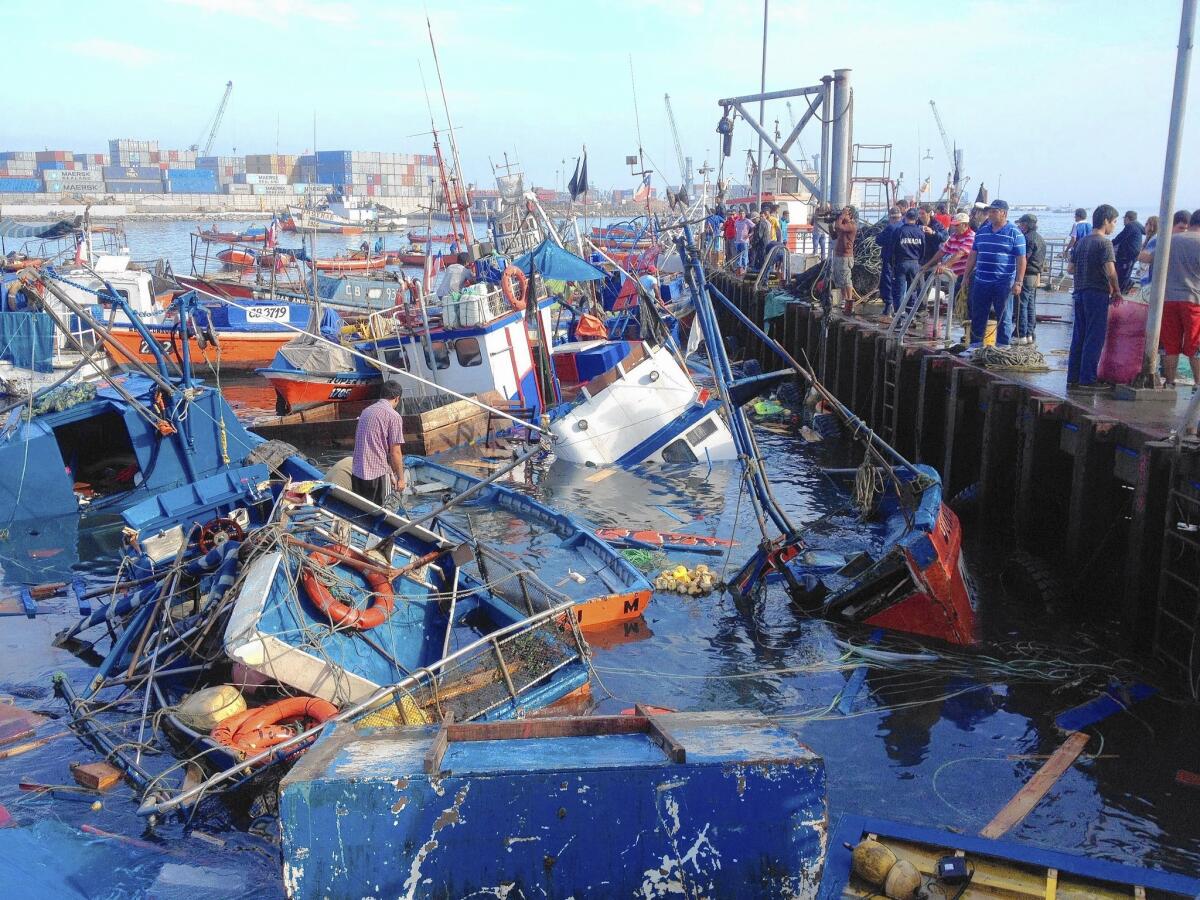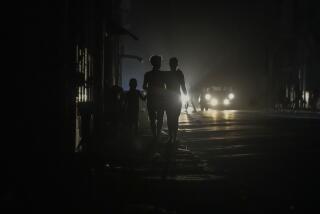Chile 8.2 quake: Damage far less severe than feared

- Share via
SANTIAGO, Chile — Chilean President Michelle Bachelet toured northern Chile on Wednesday, finding that damage from a magnitude 8.2 earthquake the night before was far less severe than feared.
Six people died — three of heart attacks, two in collapsed buildings and one in a traffic accident — and 972,457 were temporarily evacuated as the quake triggered waves that smashed boats and docks, according to Ricardo Toro, director of the National Emergency Office. Three highways in the north were closed because of large fissures.
Bachelet praised the “exemplary” job done by local officials in Iquique, a city of 182,000 about 915 miles north of Santiago, the capital.
Fishermen reported that 40 boats were destroyed by high waves in Iquique. As many as 80 homes were damaged in the surrounding Tarapaca region. Meanwhile, 39 of 300 prisoners who escaped from a jail in Iquique were reported still at large Wednesday.
Farther north, the tiny town of Pisagua, the populated area closest to the quake’s offshore epicenter, had several fires and structural damage caused by the fierce shaking, which knocked many people off their feet.
In Arica, near the Peruvian border, Mayor Salvador Urrutia told a television reporter that damage was “not so terrible as we feared.”
“The city is basically fine with no visible damage,” Urrutia said. “We don’t see any major effects from tsunami or the earthquake. None of our bridges collapsed, and principal thoroughfares are working. Schools don’t seem to have suffered significant damage.”
Improved building standards and the distance of the epicenter, 60 miles from the closest city, apparently spared Chile, experts said.
“Distance … is one of the biggest factors,” UC Riverside geophysics professor David Oglesby said.
Caltech seismology professor Pablo Ampuero noted that the earthquake-prone nation enacted stringent building standards after a record magnitude 9.5 temblor that killed thousands in 1960.
“Chile is not Haiti,” Ampuero said. “Chile is a place where there’s good construction practice and good enforcement of the construction codes.”
Only a small number of specially engineered buildings suffered even partial collapse after the magnitude 8.8 earthquake off Chile’s central coast in 2010, U.S. Geological Survey seismologist Lucy Jones wrote in a Times op-ed in 2011.
Chile credited the robust buildings “to a law that holds the original owner of a building liable for any earthquake damage it suffers during the first 10 years after it is built, even if ownership changes during that time,” Jones wrote.
“By contrast, in California, owners have little incentive to build to higher than required standards,” Jones said.
“This earthquake demonstrated that strict building codes and standards could greatly reduce losses in even the largest earthquakes,” Jones said in a report she co-wrote for the U.S. Geological Survey.
Special correspondents Gutierrez and Kraul reported from Santiago and Bogota, Colombia, respectively. Times staff writer Rong-Gong Lin II in Los Angeles contributed to this report.
More to Read
Sign up for Essential California
The most important California stories and recommendations in your inbox every morning.
You may occasionally receive promotional content from the Los Angeles Times.










